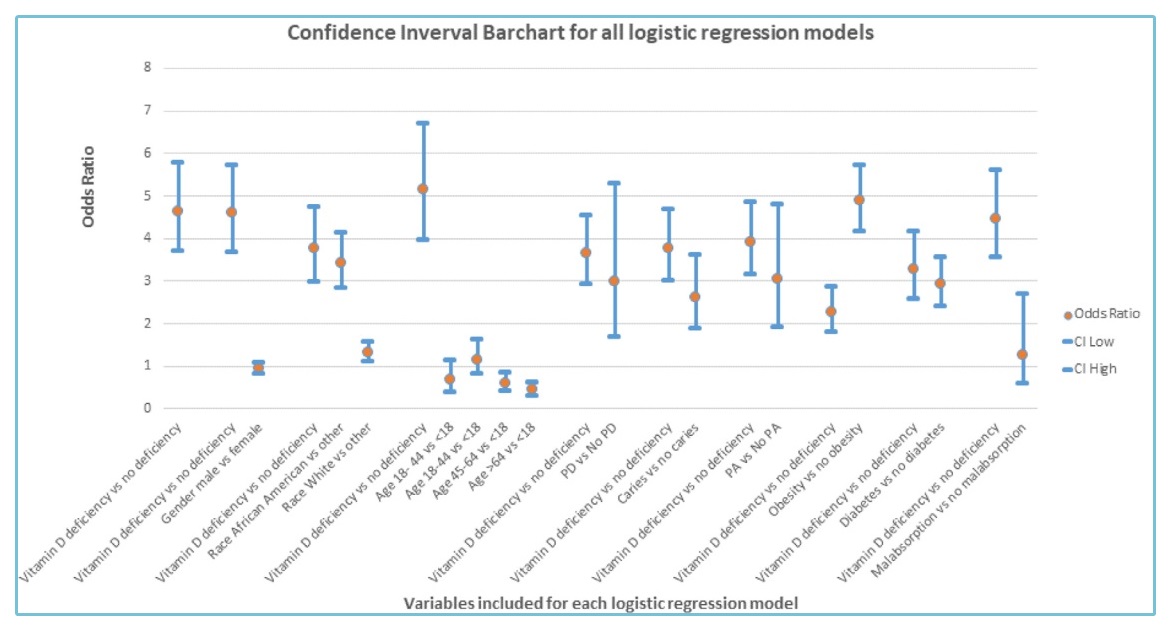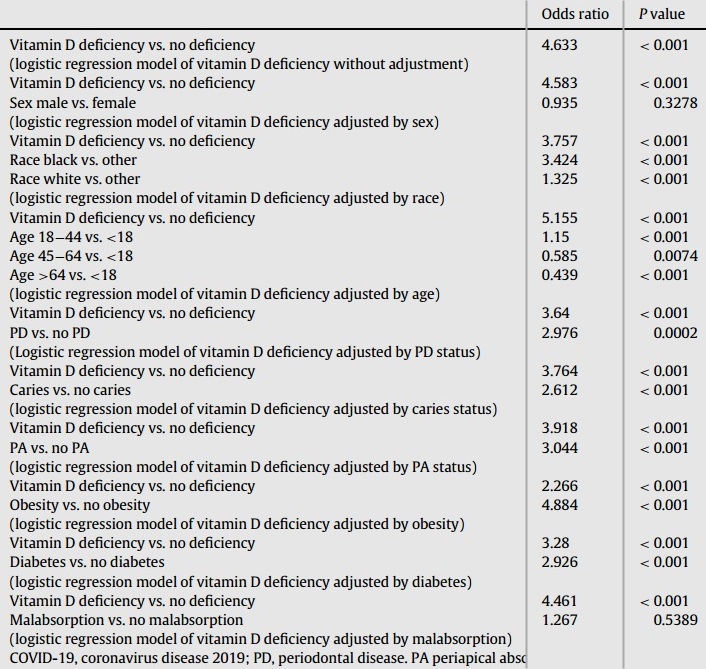COVID-19 test positive 4.5 X more likely if had low vitamin D test within 4 years
Increased risk for COVID-19 in patients with vitamin D deficiency
Nutrition Volume 84, April 2021. https://doi.org/10.1016/j.nut.2020.111106
JosephKatzD.M.D.aSijiaYueM.Sc.bWeiXuePh.D.b

📄 Download the PDF from VitaminDWiki
Objective
The 2019 coronavirus disease (COVID-19) pandemic has disproportionally affected a variety of patients with underlying risk factors such as respiratory and cardiovascular diseases, diabetes, obesity, and black race. Vitamin D deficiency, which can result in a compromised immune response, has been also linked to increased risk and increased morbidities associated with COVID-19. In the absence of large-scale longitudinal studies to determine the strength of association between vitamin deficiency and COVID-19, cross-sectional studies of large patient cohorts can be used.
Methods
We used the i2b2 patient's registry platform at the University of Florida Health Center to generate a count of patients using the international classification of diseases (ICD)-10 diagnosis codes for the period of October 1, 2015, through June 30, 2020. Logistic regression of the aggregates was used for the analysis.
Results
Patients with vitamin D deficiency were 4.6 times more likely to be positive for COVID-19 (indicated by the ICD-10 diagnostic code COVID19) than patients with no deficiency (P < 0.001). The association decreased slightly after adjusting for sex (odds ratio [OR] = 4.58; P < 0.001) and malabsorption (OR = 4.46; P < 0.001), respectively. The association decreased significantly but remained robust (P < 0.001) after adjusting for race (OR = 3.76; P < 0.001), periodontal disease status (OR = 3.64; P < 0.001), diabetes (OR = 3.28; P < 0.001), and obesity (OR = 2.27; P < 0.001), respectively. In addition, patients with vitamin D deficiency were 5 times more likely to be infected with COVID-19 than patients with no deficiency after adjusting for age groups (OR = 5.155; P < 0.001).
Conclusions
Vitamin D deficiency is significantly associated with increased risk for COVID-19.

PD = periodontal disease
PA = periapical (dental) abscesses
